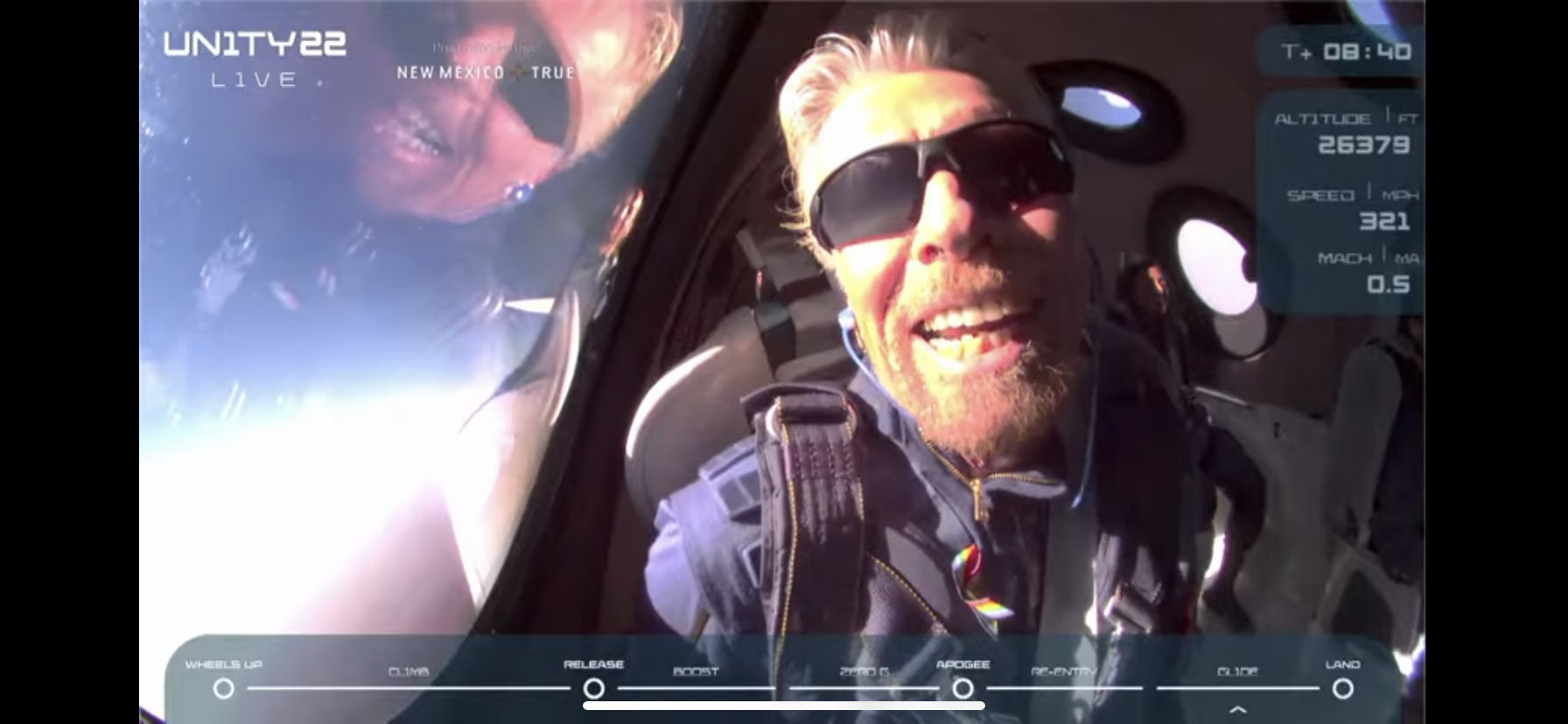
Richard Branson is now an astronaut, but did he actually go to space?
There is no single point in the sky where space can be said to begin, in part because Earth’s atmosphere doesn’t simply vanish; rather, it gradually becomes thinner and thinner over about 600 miles. Per National Geographic:

Richard Branson on Sunday launched himself more than 50 miles (80 kilometres) above the New Mexico desert aboard his Virgin Galactic rocket plane to become the first billionaire in space. In doing so he upstaged fellow billionaires and rival rocket company owners Jeff Bezos and Elon Musk. Bezos’ own trip to space is slated for July 20, and Musk is planning to launch an all-civilian crew into orbit later this year.
Although Branson is now technically an “astronaut”, did he really fly into space?
It depends on where you think space actually begins.
Several experts, including scientist Neil deGrasse Tyson, dispute that Branson flew into space.
“First of all, it was suborbital. NASA did it 60 years ago with Alan Shepard, took off from Cape Canaveral and landed in the ocean. If you don’t go fast enough to reach orbit you will fall and return to Earth,” the astrophysicist and director of the Hayden Planetarium deGrasse told CNN in an interview.
“It’s OK if you want to call it ‘space’ because average humans haven’t gotten there before and it’s a first for you. That’s why it takes eight minutes to get into orbit and three days to reach the moon. That is space travel. So I don’t see it as, ‘Oh, let’s go into space. No. What you are going to have is a nice view of the Earth,” he said.
Bezos will clearly agree with deGrasse Tyson. The Blue Origin owner has often pointed out the altitude difference between his New Shepard rocket and Virgin Galactic’s VSS Unity, a suborbital rocket-powered crewed seaplane.
From the beginning, New Shepard was designed to fly above the Kármán line so none of our astronauts have an asterisk next to their name. For 96% of the world’s population, space begins 100 km up at the internationally recognized Kármán line. pic.twitter.com/QRoufBIrUJ
— Blue Origin (@blueorigin) July 9, 2021
In a 2019 interview, Bezos said his company’s mission has always been to “fly above the Kármán line”.
The What?
Most experts agree that space starts at the point where orbital dynamic forces become more important than aerodynamic forces, or where the atmosphere alone is not enough to support a flying vessel at suborbital speeds.. And Bezos’ New Shepard rocket is, well, a rocket.
There is no single point in the sky where space can be said to begin, in part because Earth’s atmosphere doesn’t simply vanish; rather, it gradually becomes thinner and thinner over about 600 miles. Per National Geographic:
Technically, the International Space Station — which orbits at an average height of 240 miles — would not be in space if we defined “space” as the absence of an atmosphere.
Furthermore, there’s no single altitude above which a satellite can stably remain in orbit; that depends on the type of satellite and its orbital trajectory.
But in the 1900s, a Hungarian physicist named Theodore von Kármán determined the boundary where space begins to be around 50 miles up, or roughly 80 kilometres above sea level. Today, though, the Kármán line is set at 62 miles up, or roughly a hundred kilometres above sea level.
Going by that definition, Bezos is right. But as mentioned before, it is slightly more complicated. The FAA and the US Air Force both agree that flying higher than 50 miles above the earth qualifies a suborbital spaceflight passenger like Branson for the title of ‘astronaut’ – if they make the trip from a US site.
Incidentally, in 2014, in an impressive feat of space diving, Alan Eustace set the current world record highest and longest-distance free fall jump when he leaped from 135,908 feet (41.425 km) and remained in free fall for 123,334 feet (37.592 km). In doing so he broke the record of Austrian daredevil Felix Baumgartner, who jumped from over 39 km a couple of years earlier.


